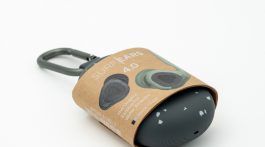By Dylan Beach and Paul Balfe
Did you know that 81% of shoppers conduct online research before making big purchases, or that 72% of consumers who did a local search visited a store within 10 km? (Source: Google Analytics).
When I used to hear people talk about a good website, SEO, website platforms and Google Analytics I often didn’t understand the full context in what was being discussed. I knew it had something to with the online space, but what I didn’t realise was how important it is to ensure a website is up to date and attractive is for the customer / consumer.
To help us wrap our minds around the ever growing website design and function we talked to Paul Balfe, website and design guru that runs Pennybridge Creative. He’s worked with surf industry members, created content for beverage companies and worked alongside numerous event managers in creating event packages that stand out.
You’ve worked on numerous websites in the surf industry, are what are the main functions you think a website should provide?
It may seem blatantly obvious but content is king. People want to engage with your brand and this can only be achieved through content. This goes for both editorial and product. The best performing sites both in and out of surf are ones that engage with their user on various levels, whether it be through content, information and/or social media. Simply having a blog link isn’t enough to engage a user and throwing up a product without having a description or information about it are huge black flags, but you’d be surprised how often this happens.As far as functions go, it is hard to pin down specifics as each business and subsequently their sites are widely different so key functions change from site to site.
There are so many different platforms and hosts available for businesses to create a website. For someone looking to create a new website is there any specific platform you would recommend over another. Why?
This is a tough one as it all depends on what the company is trying to achieve as different platforms cater to different sized businesses. For a start up, I would recommend WordPress as it is quick, cheap and easy and with over 25% of the internet utilising WordPress as their CMS, there is an abundance of free resources like themes and plugins out there to use and adapt to your needs. Most web developers are also quite savvy in WordPress so there is the potential to create great custom sites with it that won’t break the bank too.
Bigger businesses that need integration with brick and mortar POS systems, and higher level of stock accountability across multiple sites/stores would need a to look at utilising a platform/CMS that has higher enterprise functionality. Like Magento or Shopify Plus, which are the most common at the moment. I’d always advise to talk to a web designer or developer before making a decision, as more often than not they will be able to point you in the right direction based off your business needs.
Continuing on from that, the overall look and feel of a website are key when consumers are looking over a website. As a designer what are you looking for in a design brief from a customer?
Again, it all depends on the business but we will ask if they have a digital style guide with which to work from and get an understanding of the brand identity and the roll out in terms of look and feel. We always suggest references, as they are the best visual indicator of how they would like the site to look and function.
That being said however, one of the biggest things that is often overlooked when it comes to creating or building a site is the User Experience (UX). It is all well and good to have a site that looks great but if the user journey isn’t good and the user can’t easily get to where they want to go or navigate your site easily then they’ll just leave and you’ve lost a potential customer. So when we ask for a brief from a client, we often ask for references of sites they like the look of and ones they think work well and why they like it. From here, we’ll often suggest improvements to the design and UX of the site to make it more engaging and enhance the user journey. Once we’ve mapped out the user journey and the wireframes then we get into the fun stuff and start adding design elements to bring it all together.

Most of our members would already have a website up and running, but we talk to so many people that get lost around Google Analytics and SEO (Search Engine Optimisation) campaigns. Can you elaborate a bit on that side of a website? Do you think it’s worth people tapping into these plug ins?
SEO and SEM is its own kettle of fish and it is easy to get caught up in it. Like I mentioned before, content is king. The more unique content you produce, the better your SEO ranking is going to be so it’s a win win. It also depends on the business you are in. If you are running a niche business then you probably don’t have as much competition and wouldn’t need to invest large amounts into SEO however, if you do have a large competition base and the market is saturated, it is worth doing a competitor analysis to see how competitive the marketplace is around SEO and if you should be investing heavily into campaigns or investing in other alternative marketing routes.
I’d also put some time into seeing where your customers are coming from to see if you can do more targeted campaigns. This may lead to targeting a specific demographic or geo-targeting based off the location your customers are coming from or where you would like to gain a better customer base.
Leading on from that, how would a retailer for example use these insights to their advantage?
I’ve had businesses that after looking at their analytics have realised that half or more of the traffic coming to their site was in different states and once they started to broaden their scope and market properly to these customers they saw an increase in sales. This is also the case for marketing. Sometimes some of the best lead generators or referrals can be surprising so it can be worth adapting your marketing plan to account or attempt to boost this.
So lets say a brand or retailer has their website is live and running. What advice would you give to make the most of their website?
Most businesses invest a lot of money into their website only to leave it there once it’s live and do nothing with it. It is the first point of reference for any business these days so utilise it, update it and see how you can constantly improve it to keep customers coming back. Are there additional add-ons or plugins that would benefit your business etc? Are you checking you analytics to see if people are bouncing, their time on site and where they are coming from so you can invest more time in certain marketing avenues over others?
We all get busy and I myself am guilty of neglecting my site but if you keep on top of it then it won’t become such a big task.
Thanks Balfey. We hope that if you are thinking about updating your website, or looking into how to maximise the current site your running that these few tips were able to help you get on the right track.
To check out some of Pennybridge Creative’s work head to their website www.pennybridge.com.au








